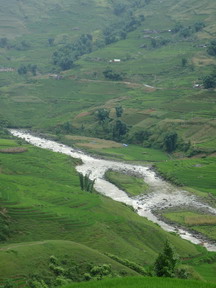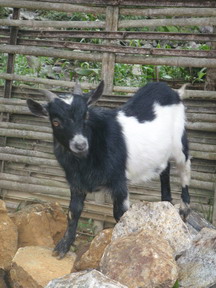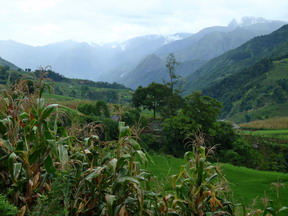Sapa
For convenience we again booked a tour through Mike’s hotel for our trip to Sapa which included the trip there and back by train, a night’s accommodation in town days trekking and a night at a home stay in one of the hill villages and all food ..a bargain at $136 USD each!!

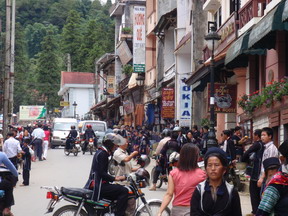
This was our first train trip and we had splashed out on a soft sleeper which we shared with 2 Chinese ladies – neither of whom spoke much English so not much chatting! We both slept pretty well but still felt a bit groggy at 6am when the train pulled into Lao Cai station which is about an hour out of Sapa. We had a bit of a rocky start when our guide who was supposed to be waiting for us with a “Mr. Andrew” sign failed to materialize. The station was heaving with tour guides meeting people and frantically waving name cards around and one of them came to our rescue and took us into town, despite us not being on his list.
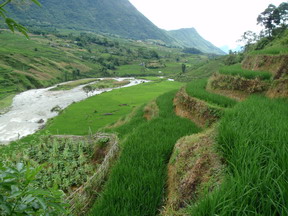
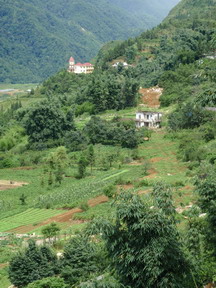
The drive was very scenic all misty mountains and cascading rice terraces though we both kept nodding off! We reached Sapa where thankfully our guide –full of apologies – was waiting for us and we headed off to our hotel for a shower. Sapa a hill station built by the French in the 1920s is at the end of a beautiful scenic valley very near the Chinese border. The village looks up to

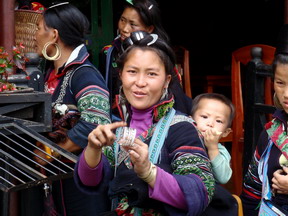
Sapa is an attractive little town with a main street lined with shops selling souvenirs mainly clothes hangings and covers made from the local hemp and dyed using natural indigo based dyes, silverware and wood carvings. There is also a large market area, but the real interest is in the indigenous peoples mainly the H’Mongs and the Dzao here who flock into town to sell their goods. These attractive gorgeously attired people may not be formally educated but they are very intelligent the youngsters particularly having a great command of English and often French as well. The hard sell can get a bit wearing but its delivery is very charming and quite hard to resist!
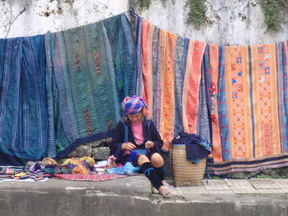

Whilst it is the rainy season here it is still pleasantly warm and you only need a thin waterproof though in the winter it can go down to O degrees apparently with snow up in the higher lands.

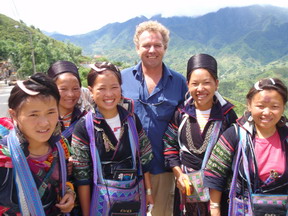

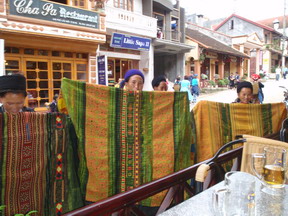
The next day we met up with the Israeli couple who were to be our tour companions and our 2 tour guides and began the 20 km round trip to the
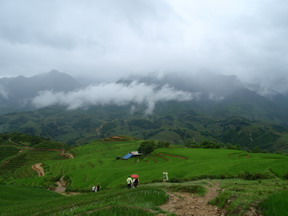
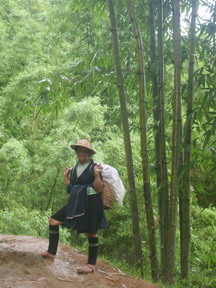
After walking until 5pm we stayed the night within the home of a village family along with some other travellers who had arrived earlier. The guides cooked a great meal and we enjoyed a lovely view of the surrounding hills and village life going on around us, with ducks and chickens everywhere. The next day we had more of a walk this time the conditions were incredibly slippery and even the guides were falling which was a bit hairy! However the views –terraced rice fields, rivers and waterfalls – made it all worthwhile being absolutely breathtaking.


We both felt it was some of the best scenery seen on the trip to date, which made the muddiness and steepness of the climb worth it though even with the H’Mong ladies helping I went over twice and ended up covered in mud!
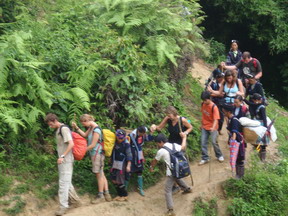
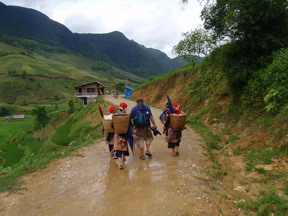


The Hill Tribes consist of many different peoples each with their own dress and language. The most populous ones here are the H’Mongs a tribe originally from
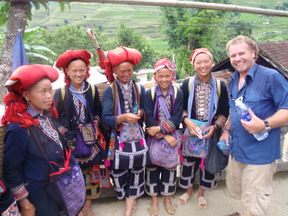
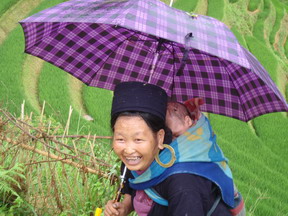
We also met some Dzao ladies who shave their heads and wear elaborate red head dresses – the simpler ones being for young girls the more elaborate for married ladies with the coins denoting the amount of their wealth. They really were fascinating lovely people though we ended up having to send a 10 kilo parcel of shopping ahead to
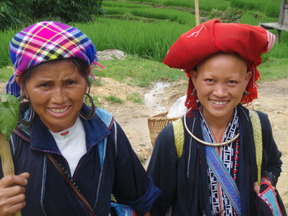

So, after a shower and back in clean clothes though with sore legs we boarded the overnight train once more for the 10 hour trip back to

